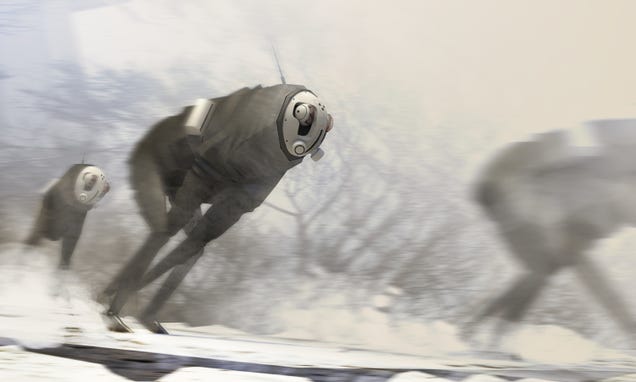----
The Mysterious River Sharks of the World //
Mysterious Universe 
With their gaping maws full of jagged, sharp teeth, sharks are some of the most feared creatures of the water. However, most people see these frightening creatures as being strictly confined to the oceans. Don't go to the beach and no sharks, right? However, despite all that you may think you know about sharks, it may surprise you that there are several species that can be found in fresh water. Many people may already be aware of the disturbing tendency for bull sharks to tolerate and even thrive in freshwater environments, but fewer people know that there are actually whole species of sharks that have evolved to live exclusively in freshwater rivers. These are the enigmatic, very little understood, exceedingly rare river sharks.
Most of the river shark species found so far are known only from freshwater specimens and it is thought that they are either fully freshwater creatures or possibly euryhaline, meaning they are able to tolerate a broad range of salinity levels. Most of the known species of river shark are of the family Carcharhinidae, and all but one comprise their own genus, Glyphis. They are most closely related to whaler sharks of the genus Carcharhinus, with which they share the same overall morphology, including a short, broad snout, that is shorter than the mouth is wide, widely spaced nostrils, small, dark eyes, and broad serrated upper teeth. They are robustly built, with a high back that swoops down to the broad, rounded snout.

Whaler shark, a close relative of the river sharks
Although there are of course physical differences between them, one trait that all river sharks share is their extreme rarity. These are among the rarest of sharks, indeed among the rarest of animals, period. Many species of river shark are known only from a few specimens and one is known only from a single holotype. They are so rare that virtually nothing is known of their behavior and ecology other than that they inhabit fresh water.
Here we will look at what little we know about each of the known species of fresh water river sharks and learn about these rare, miraculous creatures.
The Ganges River shark
Perhaps the one river shark that some might be familiar with is the Ganges River shark (Glyphis gangeticus), which inhabits the Hooghley and Ganges river systems of India. The species is known exclusively from specimens captured in fresh water and there have been none found in marine or brackish environments.
The Ganges River Shark shares its habitat with bull sharks, which are known to frequent the same river systems. Indeed Ganges River sharks were once thought to be merely bull sharks, but there are some key morphological differences that differentiate the two into separate species. Whereas the upper teeth of the Ganges River shark are broad, triangular, and serrated just as with those of Bull sharks, the lower teeth are narrower and longer, with spear-like tips. This suggests that the Ganges River shark is more totally devoted to a diet of fish, rather than the more varied diet of Bull sharks. In addition, the Ganges River shark has the unusual feature of eyes that tilt upward in their socket at an angle, which means they probably locate prey by staying near the bottom and spotting the silhouette of their quarry above whereas bull sharks have eyes that are angled laterally or downward and likely catch most of their prey on the bottom. These differences could mean that since the two species eat different food and catch prey at different levels of the water column, Ganges River sharks and bull sharks likely don't compete too much for food in habitats where they occur together.

The Ganges River shark
Unlike other species of river shark, the Ganges River shark has the distinction of having gathered somewhat of a reputation for being a man-eater as there have been reports of Indians bathing in the Ganges River being attacked or killed by sharks. Although it is certainly feasible that a Ganges River shark might mistake the shape of a human for other prey and bite, it is unlikely that most attacks are the result of this species and it is probable that the culprits in these cases are bull sharks rather than Ganges River sharks. Bull sharks are known to be very aggressive man-eaters, and have a more adventurous appetite than the Ganges River shark with its smaller, less formidable teeth and piscivorous lifestyle. It is thought by biologists that most, if not all such attacks on humans reported along the Ganges River are probably carried out by bull sharks.
Until the 1990s, the Ganges River shark was known only from three museum specimens collected in the 19th century. In 1996, after nearly a decade of actively searching for living specimens, a few more Ganges River sharks were captured and studied. These few specimens are all we have to go on and thus the Ganges River shark remains mostly an enigma. The species is considered to be extremely rare, and is listed as critically endangered by the International Union for Conservation of Nature (IUCN). It is unfortunate that the rare Ganges River shark has such a menacing reputation among locals, since even the death of a single specimen at the hands of vindictive fishermen is a great loss of potential data on this largely mysterious species.
The Northern River Shark
The Northern River shark (Glyphis garricki), is a large species of river shark that may reach up to 2.5 meters (8.2 feet) and possibly up to 3m (10 feet) in length that inhabits remote tidal rivers of Australia's Northern territory, northern Queensland, and Papua New Guinea, where the very first specimens were originally found.
The Northern River shark is thought to mostly frequent brackish, low salinity waterways and make regular ventures into fresh water. The shark's favored habitat is known for its turbid, murky water and low visibility, and thus it possesses unusually small eyes. To make up for its poor vision, the Northern river shark has a higher than normal concentration of ampullae of Lorenzini, which are special receptor organs that can detect the electrical fields of living creatures and help the shark locate prey in poor to zero visibility conditions. Northern river sharks are thought to be piscivorous, as their teeth are rather narrow for their overall size and geared towards smaller prey such as small, bony fish.

Northern river shark
The Northern river shark was first discovered in 1986 and, like other river sharks, is very rare. It is only known from around 30 specimens collected over the years from a mere handful of scattered river systems, and estimates have suggested that possibly only around 250 mature individuals exist in the wild. Due to its rarity, the Northern river shark has been listed as a critically endangered species by the IUCN Red List. It is thought to be particularly vulnerable to damming and other water programs, which have become more common in the shark's known habitats. In addition, the sharks are vulnerable to haphazard and illegal net fishing for other species in the areas they are known to inhabit. Typically fishermen will catch the sharks by accident, kill them, and toss them overboard. Although recovery projects have been proposed and implemented, the threat of habitat degradation and illegal fishing to the Northern river shark is considered to be so grave that the species may become extinct before we ever learn much more about it.
The Borneo River Shark
The Borneo river shark (Glyphis fowlerae) is a small species that is thought to reach lengths of about 78 cm (31 inches). As the name suggests, they are found in Borneo, specifically in the Kinabatangan River.
The Borneo river shark is one of the rarest of the river shark species, and indeed possibly the rarest of any kind of shark. The species was long known from only a single specimen. In total, only 13 specimens of this species have ever been caught, all from fresh water, and the species was only finally described by science in 2010. The habitat of the Borneo river shark is believed to be extremely small, and thought to comprise just one stretch of the river near a small village.

The Borneo river shark
In 2010 and 2011, soon after the species was formally described, an expedition was sent to try and find more of these elusive sharks, yet the results were not promising. Not only did the expedition fail to find a single specimen of the shark after an exhaustive search, but local fishermen claimed that the sharks hadn't been seen or caught in the river in years. As such, there is the very real possibility that the Borneo river shark is already extinct. Although there have been efforts to preserve the species undertaken by conservation groups such as the Tropical Research and Conservation Centre, sadly it may very well be too little too late.
The Speartooth Shark
The speartooth shark (Glyphis glyphis), also known as the Bizant river shark or Queensland river shark, is native to river systems of northern Australia and New Guinea. It is so named for its unique teeth, which are only serrated near the tips in the lower jaw and are shaped like little spear tips, most likely for impaling and holding onto small, bony fish or other prey. It is a fairly large shark thought to reach lengths of around 2.5–3 m (8.2–10 ft). The shark is thought to mostly inhabit fresh water or brackish tropical rivers with fast currents and muddy bottoms. Visibility in this environment is extremely poor and it is thought that the speartooth shark's eyesight is poor.

Speartooth shark
The shark was first discovered as a museum specimen of a juvenile female and described in the early 19th century. This remained the only specimen for the species until 1982, when similar sharks were captured in the Bizant River of Australia. These Bizant river sharks were not considered to be the same species as speartooth sharks at first, and were classified as a different species known simply as Glyphis species A. It was only recently confirmed that the Bizant River sharks are synonymous with speartooth sharks by researchers Leonard Compagno, William White, and Peter Last.
This species is only known from a few juvenile specimens and no adults have been caught, which makes it difficult to accurately discern the speartooth shark's true size, behavior, or even its preferred habitat when fully grown. It is thought to be very rare and critically endangered.
The Irrawaddy River Shark
Certainly the rarest and most mysterious of the river sharks is the Irrawaddy river shark (Glyphis siamensis) of the Irrawaddy River in Myanmar. The species is known from only a single specimen caught in the 19th century near the mangrove covered mouth of the Irrawaddy River near Rangoon. The specimen was a juvenile that measured 60cm (24 inches) long. Using the growth rate of similar sharks as a basis, it is estimated that the shark would have an adult length of around 1–3 m (3–10 ft).

The Irrawaddy River at sunset.
The existence of only a single holotype specimen has created much controversy over the years as to the shark's true classification. It was originally described as Carcharias siamensis by the Austrian ichthyologist Franz Steindachner, but this was challenged in later years. Many ichthyologists argued that the original specimen was merely an abnormal or deformed bull shark rather than a separate species, but shark systematist Leonard J.V. Compagno classified it as its own species within Glyphis in 2005. The shark has thus come to be known as Glyphis siamensis, but there is still some uncertainty and debate as to how it should be classified.
Heavy fishing and habitat degradation have occurred in the area where the lone specimen was caught, and not a single additional specimen has been found in nearly a hundred years, despite several concerted attempts to locate it. It seems that, as with the Borneo river shark, there is a high likelihood that the Irrawaddy river shark is extinct.

The river sharks represent a fascinating group of animals that we know next to nothing about. All of the species here are known from only a handful of specimens and are only very rarely caught or observed in the wild, making it exceedingly difficult to study them or gain any insight into their feeding habits, reproductive characteristics, lifestyles, or even how many of them there truly are.
One thing that is known is that there are not many of these mysterious fresh water sharks left, and their habitats are being degraded at an astonishing rate. Sharks in particular are sensitive to such pressures, as they are known for their small litter sizes, long gestation, and slow growth and rate of maturity, which all means that even small amounts of overfishing, pollution, or other habitat degradation can have devastating effects on their populations. The river sharks are likely no different, with the added complication that they are so confined to limited, smaller, more specialized habitats. Many of the tropical rivers or estuaries in which these river sharks are found are prone to pollution, rampant overfishing, and other human interference such as the building of dams, the clearing of mangroves, or the redirection of water flow.
The river sharks are in trouble, with some of these species likely already extinct. It is somewhat sad to think that these majestic creatures which prowl the freshwater rivers of the world without anyone even knowing they are there may disappear forever before anyone ever finds out. Without serious conservation efforts, the river sharks will die out and their mysteries will die with them.
----
Shared via
my feedly reader 












































